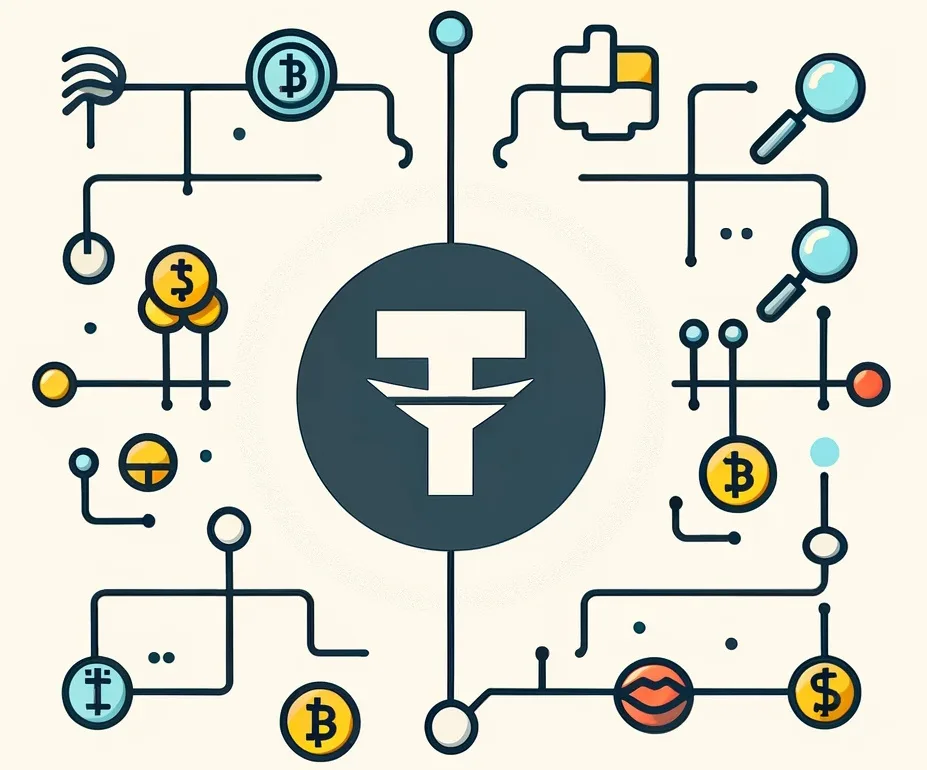Cryptocurrency has been a buzzword in finance and technology for the last decade, signifying a dramatic shift in how we perceive and interact with digital assets. Among the plethora of digital currencies, Tether (USDT) has carved out a unique and pivotal role.
Unlike its more fluctuating counterparts like Bitcoin and Ethereum, Tether is a stablecoin, a type of cryptocurrency designed to offer stability in a notoriously volatile market. This post is our chance to dig into Tether’s role, significance, and the controversies surrounding it in the intricate tapestry of the cryptocurrency world.
What is Tether?
Tether, commonly referred to by its symbol USDT, is a blockchain-based cryptocurrency whose tokens in circulation are backed by an equivalent amount of U.S. dollars, making it a stablecoin.
It was originally launched as Realcoin in 2014 and rebranded later that year. The idea behind Tether is simple yet powerful: it aims to combine the unrestricted nature of cryptocurrencies with the stable value of the US dollar.
The Unique Appeal of Tether
- Stability: In a world where most cryptocurrencies are subject to extreme price volatility, Tether offers relative stability as its value is pegged to a fiat currency.
- Bridge between Fiat and Crypto: Tether acts as a digital dollar used on blockchain networks. It provides a straightforward way for traders to park their assets in a stable asset during market downturns without having to convert back into fiat currency.
- Reduced Transaction Times and Costs: Tether facilitates quicker and cheaper transactions than traditional banking systems while providing a way to transact in a U.S. dollar equivalent through digital platforms.
Tether’s Role in the Cryptocurrency Ecosystem
Tether’s introduction marked a significant development in the crypto space. It has served several key roles:
- Market Stability: By offering a stablecoin, Tether provides traders and investors a safe haven during periods of high volatility in the crypto market.
- Liquidity Provision: Tether contributes significantly to the liquidity of the cryptocurrency market. It allows for seamless transfer of value within exchanges, aiding in large transactions and rapid trades.
- Access to Traditional Currencies: Tether bridges the gap between fiat currencies and cryptocurrencies, providing users with the benefits of digital assets (like fast transaction speeds and global reach) while maintaining the stability of a traditional currency.
The Controversies Surrounding Tether
Despite its utility, Tether has not been without controversy:
- Backing and Reserves: There have been ongoing concerns and debates regarding whether Tether’s claims of being fully backed by U.S. dollars are accurate. The company behind Tether has faced legal challenges and inquiries into its reserve holdings.
- Market Manipulation Accusations: Tether has been at the center of speculation regarding market manipulation, particularly concerning the 2017 Bitcoin price surge. Critics argue that Tether issuance might be used to buy Bitcoin and inflate prices.
- Regulatory Scrutiny: The growing use of Tether has attracted attention from regulatory bodies concerned about its potential to bypass financial laws and regulations, including anti-money laundering standards.
The Future of Tether and Stablecoins

As the cryptocurrency landscape continues to evolve, the role of Tether and other stablecoins is likely to become more central. Their ability to provide stability and efficiency in transactions positions them as crucial players in the future of decentralized finance (DeFi) and blockchain technology.
Potential Developments
- Wider Adoption in DeFi: Tether could become more integrated into DeFi platforms, providing a stable medium of exchange for various financial services on the blockchain.
- Increased Regulatory Oversight: With its growing prominence, Tether might face more stringent regulatory requirements, which could impact its operations and the broader crypto market.
- Innovations in Stablecoin Technology: New advancements could emerge to enhance the stability and trustworthiness of Tether and other stablecoins.
Tether’s journey in the cryptocurrency world is a testament to the innovative spirit of digital finance. It exemplifies the desire for stability in a domain characterized by rapid change and volatility. While Tether has its share of controversies, its impact on the market is undeniable. As we move forward, the trajectory of Tether will be a significant indicator of how cryptocurrencies can evolve to become more integrated into mainstream finance, blending the revolutionary potential of blockchain technology with the steadiness of traditional fiat currencies. The story of Tether is far from over; it’s a key chapter in the unfolding narrative of the cryptocurrency saga.



Tether is a weird component of the cryptoworld. I’ve never really seen the benefits of it, but some people are so tied to fiat they can’t imagine the poiwer of crypto!